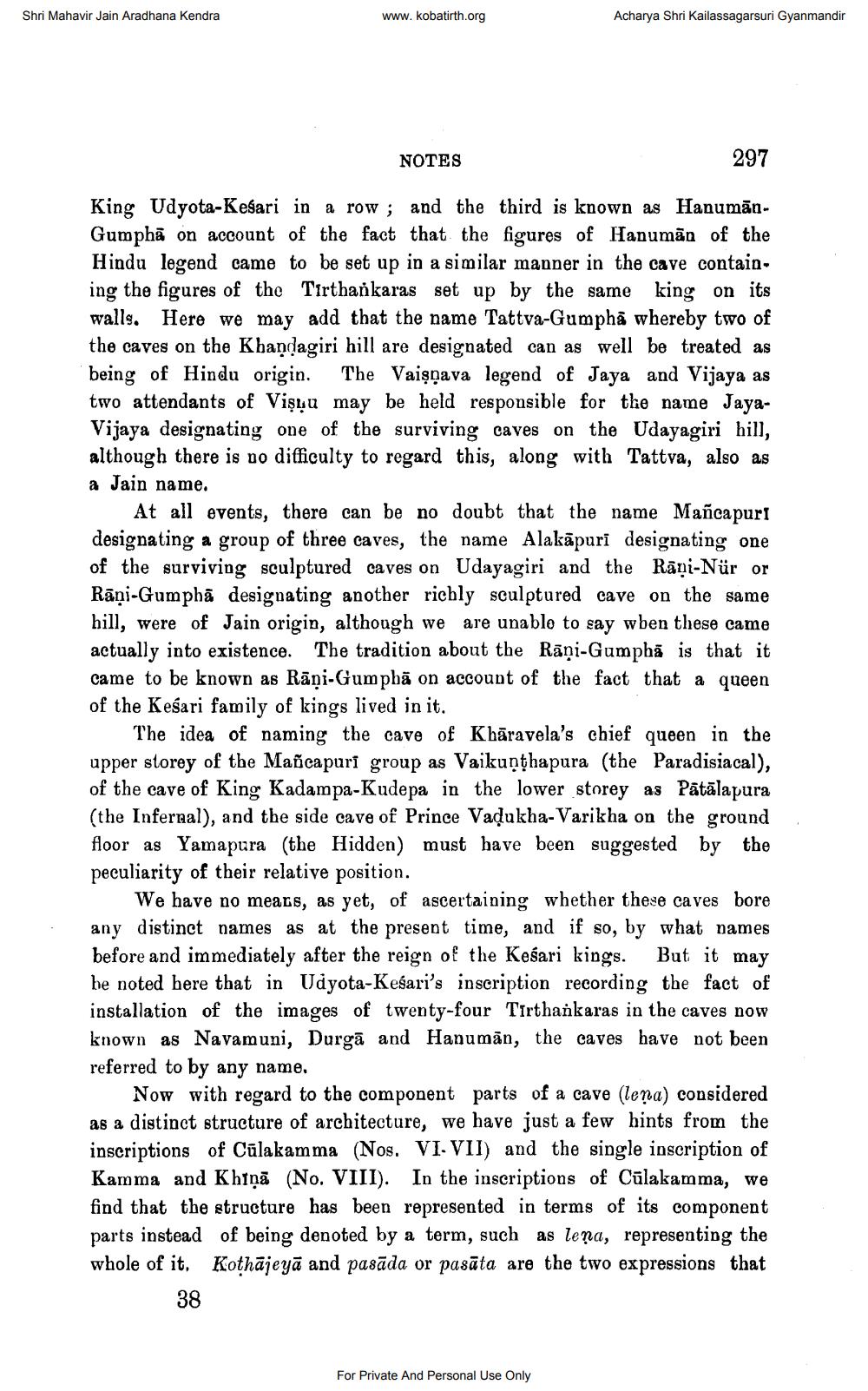________________
Shri Mahavir Jain Aradhana Kendra
www.kobatirth.org
Acharya Shri Kailassagarsuri Gyanmandir
NOTES
297
King Udyota-Kesari in a row; and the third is known as Hanumān. Gumphā on account of the fact that the figures of Hanumān of the Hindu legend came to be set up in a similar manner in the cave contain: ing the figures of the Tirthankaras set up by the same king on its walls. Here we may add that the name Tattva-Gumphā whereby two of the caves on the Khandagiri hill are designated can as well be treated as being of Hindu origin. The Vaişņava legend of Jaya and Vijaya as two attendants of Vişyu may be held responsible for the name JayaVijaya designating one of the surviving caves on the Udayagiri hill, although there is no difficulty to regard this, along with Tattva, also as a Jain name.
At all events, there can be no doubt that the name Mañcapuri designating a group of three caves, the name Alakāpuri designating one of the surviving sculptured caves on Udayagiri and the Rāņi-Nür or Rāņi-Gumphā designating another richly sculptured cave on the same hill, were of Jain origin, although we are unable to say wben these came actually into existence. The tradition about the Rāni-Gumpha is that it came to be known as Rāņi-Gumphā on account of the fact that a queen of the Kesari family of kings lived in it.
The idea of naming the cave of Khāravela's chief queen in the upper storey of the Mañcapuri group as Vaikunthapura (the Paradisiacal), of the cave of King Kadampa-Kudepa in the lower storey as Pātālapura (the Infernal), and the side cave of Prince Vadukha-Varikha on the ground floor as Yamapura (the Hidden) must have been suggested by the peculiarity of their relative position.
We have no mears, as yet, of ascertaining whether these caves bore any distinct names as at the present time, and if so, by what names before and immediately after the reign of the Keśari kings. But it may he noted here that in Udyota-Kesari's inscription recording the fact of installation of the images of twenty-four Tirthankaras in the caves now known as Navamuni, Durgā and Hanumān, the caves have not been referred to by any name.
Now with regard to the component parts of a cave (lena) considered as a distinct structure of architecture, we have just a few hints from the inscriptions of Cūlakamma (Nos. VI. VII) and the single inscription of Kamma and Khiņā (No. VIII). In the inscriptions of Cūlakamma, we find that the structure has been represented in terms of its component parts instead of being denoted by a term, such as leņa, representing the whole of it. Kothājeyā and pasāda or pasāta are the two expressions that
38
For Private And Personal Use Only




